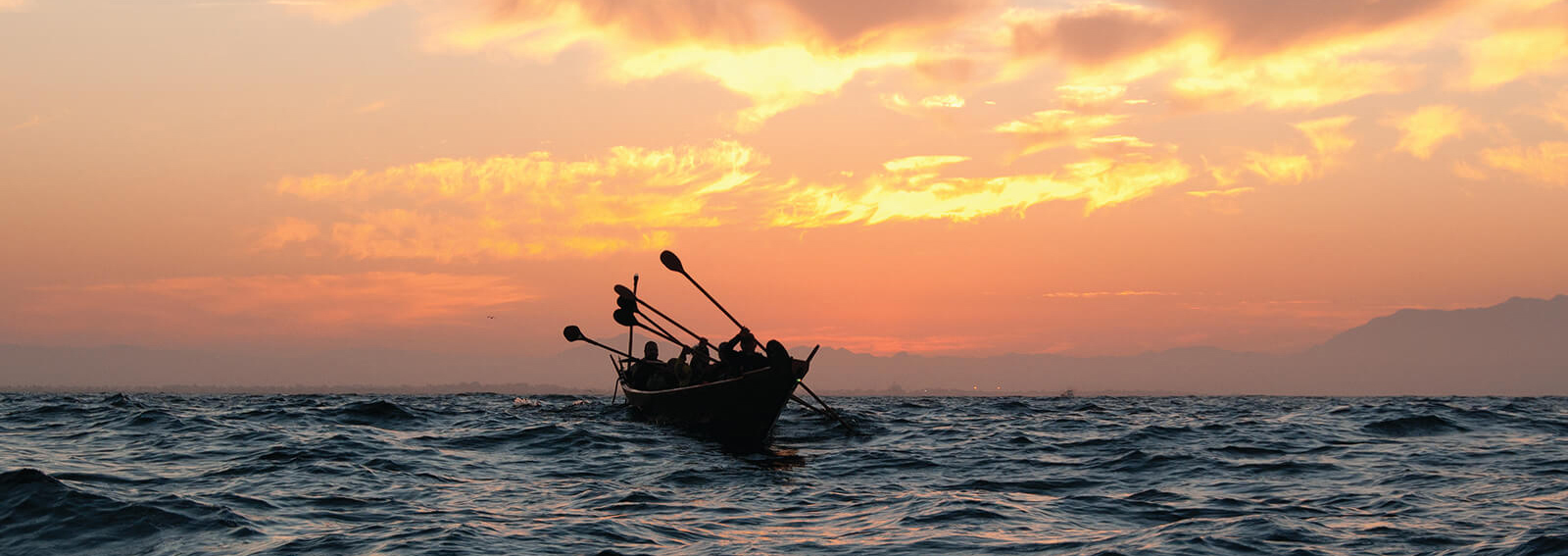Dark Water Journey: Eva Pagaling

Eva Pagaling is a member of the Santa Ynez Band of Samala Chumash Indians. Each year, she participates in the Chumash community tomol crossing, a traditional journey from the California mainland to Limuw, or Santa Cruz Island. This is her Story from the Blue.
Paddling in Dark Water during the annual Chumash community tomol crossing this year was like paddling into the abyss as we pulled water without the benefit of moonlight. The night sky made the waves between Channel Islands Harbor and Limuw appear a shade darker than midnight, and the thick layers of fog floating between us obscured what was left of our vision. I couldn’t see more than a few feet in front of me. This forced us to measure the magnitude of the currents as the waves crashed against our tomol and paddles. The sound of those waves is the ocean’s breath, and to keep cadence, we must sync our breath with hers.
Our tomol comes to life in the dark of night and she helps connect her paddlers to one another. She does this by reminding us of our ability to sense each other’s energy even in pitch-black waters. As “seat-one” paddler, in order to determine our pace, I must listen to the breathing patterns of my crew. In understanding this, it’s taught me that the power behind each stroke is dependent upon our ability to tune in with each other.

As a next-generation female paddler, one of the highest honors I’ve received was being asked to paddle Dark Water. I’ve been involved with paddling since I was 10 years old during the first and historic crossing of the tomol ‘Elye’wun (Swordfish) in 2001 and have been part of this tomol family ever since. My tomol family consists of paddlers and the tight-knit community that greets us on Limuw after our voyages. Without my tomol family coming together for the crossings, I would have lost touch with our ways of the ocean and the islands we come from. I am eternally grateful for the tomol community-at-large who loved and reared me from a young age to become a paddler.
I am also especially grateful for my father, Reggie Pagaling. For many years, I watched my father pour everything he had into the crossings while I was on the support boats. I watched his evolution as a paddler, and as he helped lay the foundation for all future paddlers. I saw him go from a puller, to a navigator, and soon after, a captain. And when his days as a paddler came to an end, he chose to take it a step further and build his own elegant redwood plank canoe, the tomol Muptami (Deep Memories). Muptami’s name holds a great deal of space in my heart because I’ve come to understand what deep memories mean to me after paddling in her this year.


During the crossing, a deep memory that’s shared among paddlers is that each pull of the oar is a prayer. This year, I prayed for my loved ones, as well as everyone else in this world. I prayed for strength and healing for all people, wherever they may be on their path in life. We are water people and our medicine for the world can be found in the sacred and life-sustaining power of water.
Next year, I will begin my journey in becoming a navigator, in hopes of bringing new medicine to our people. And once again, I will start a new chapter in our stories.


